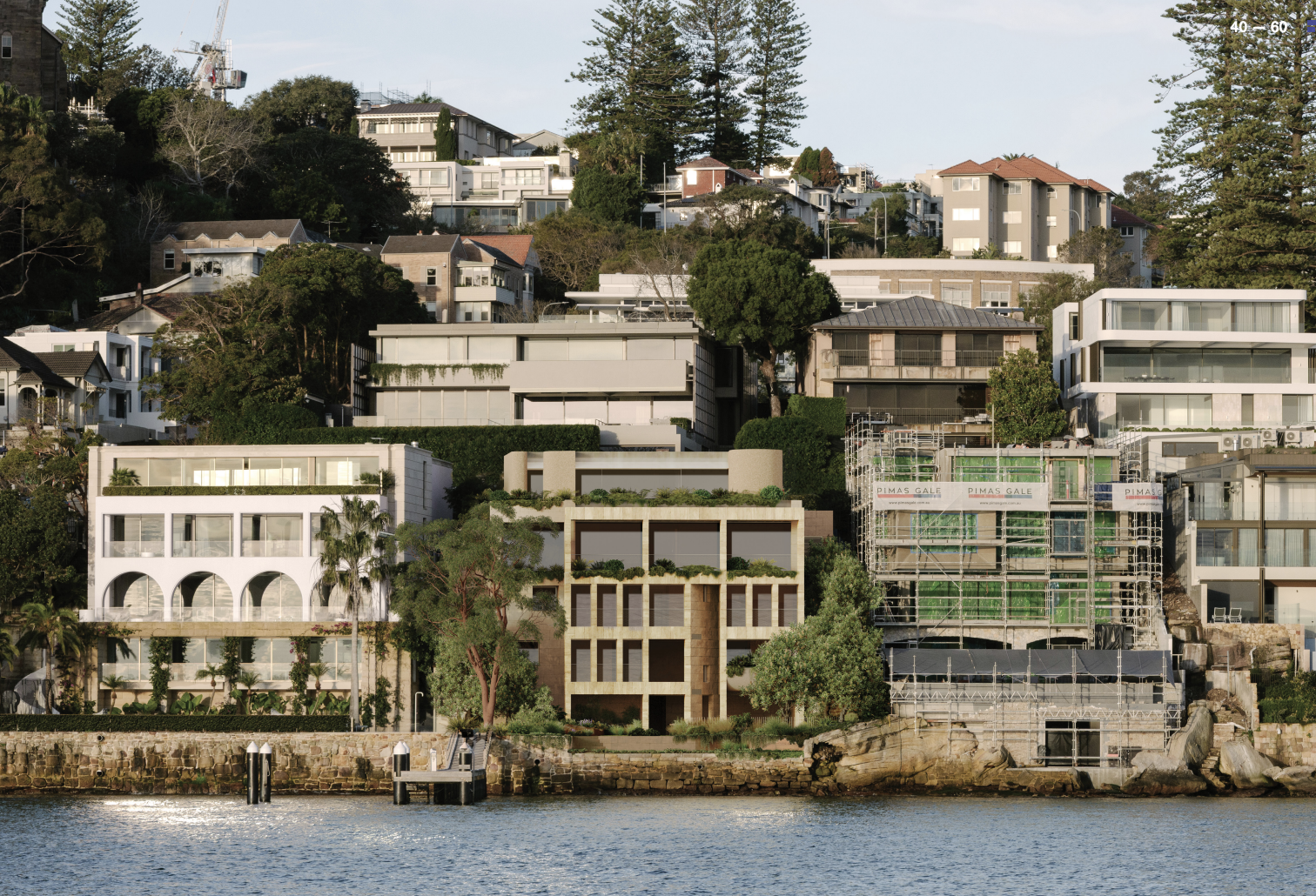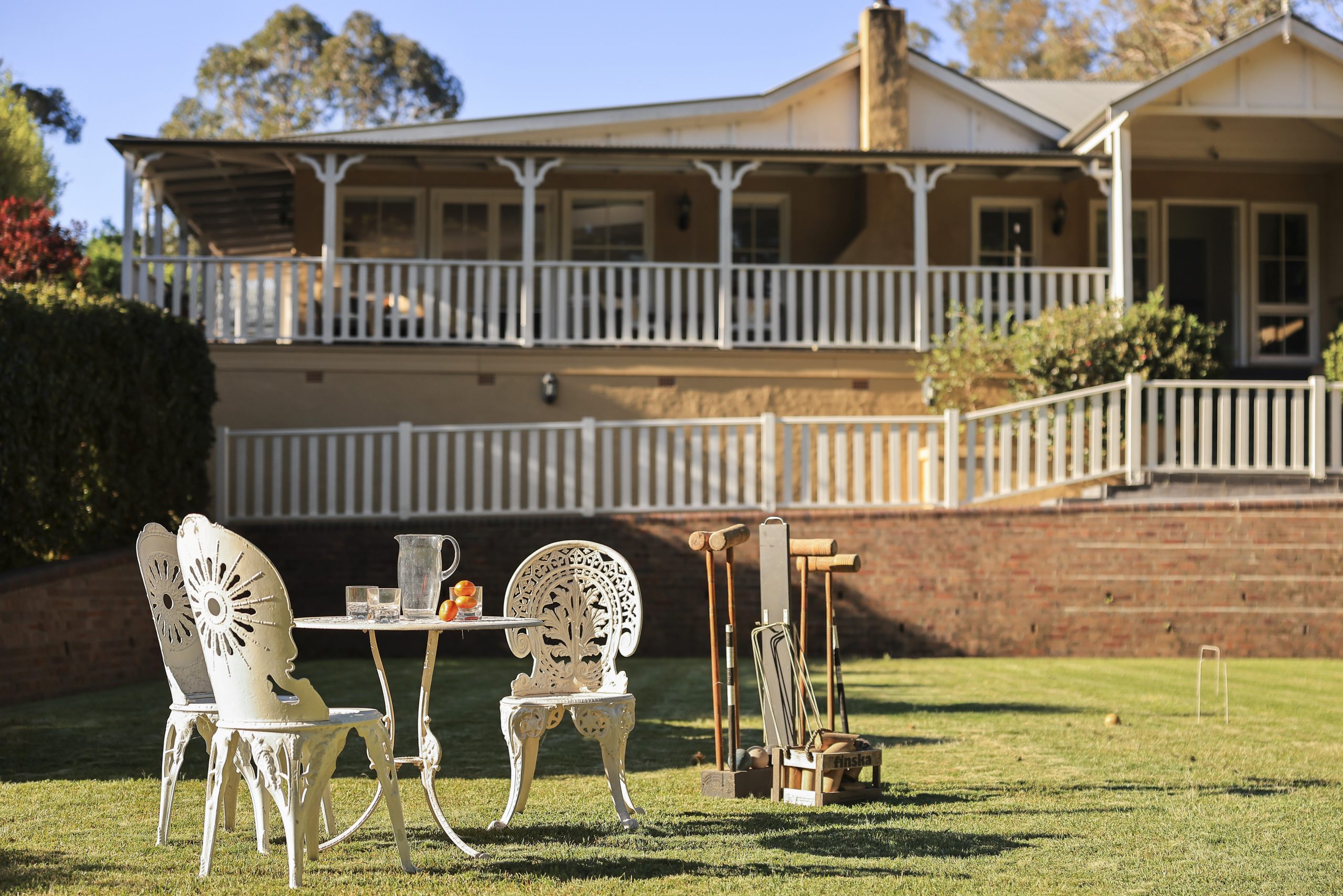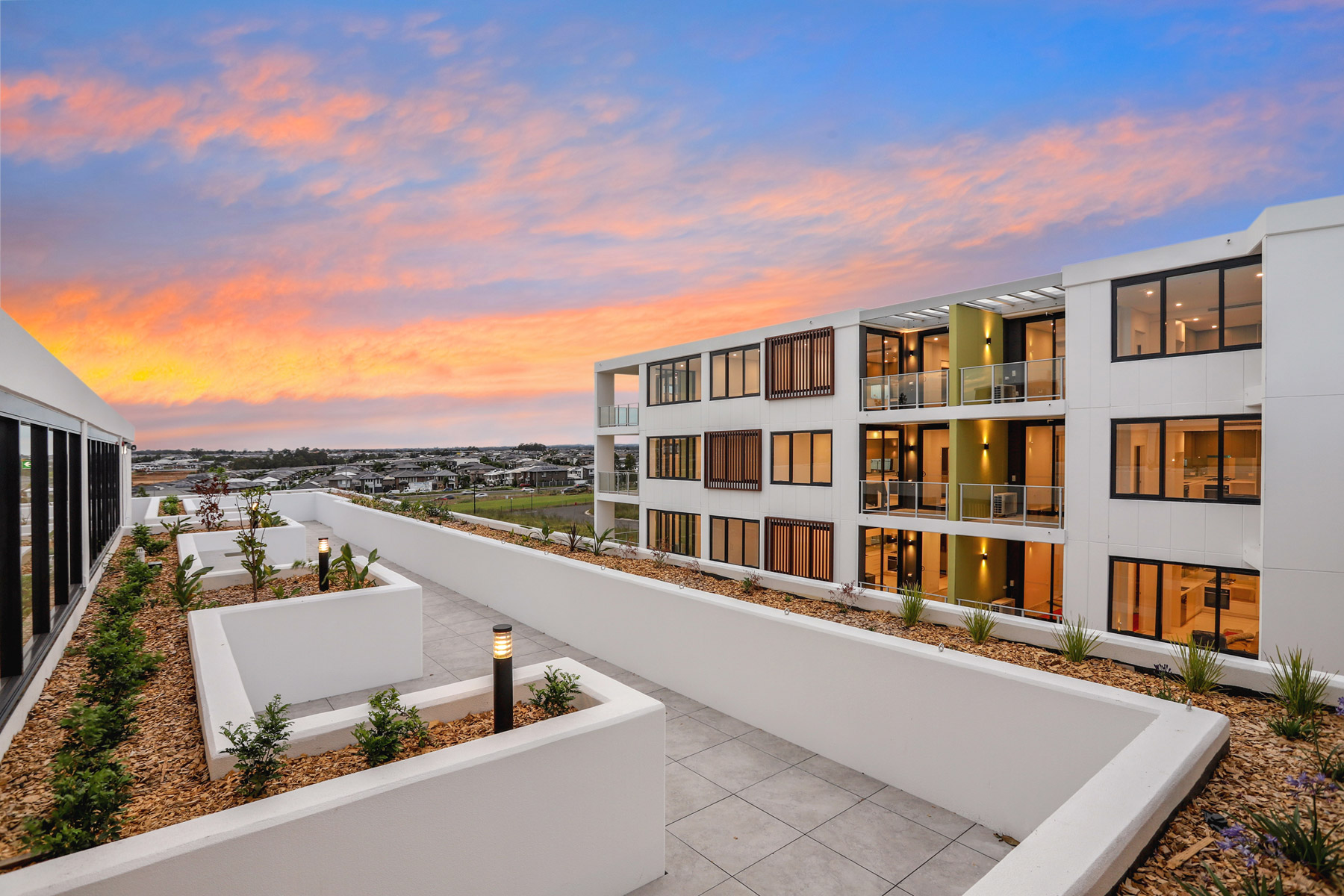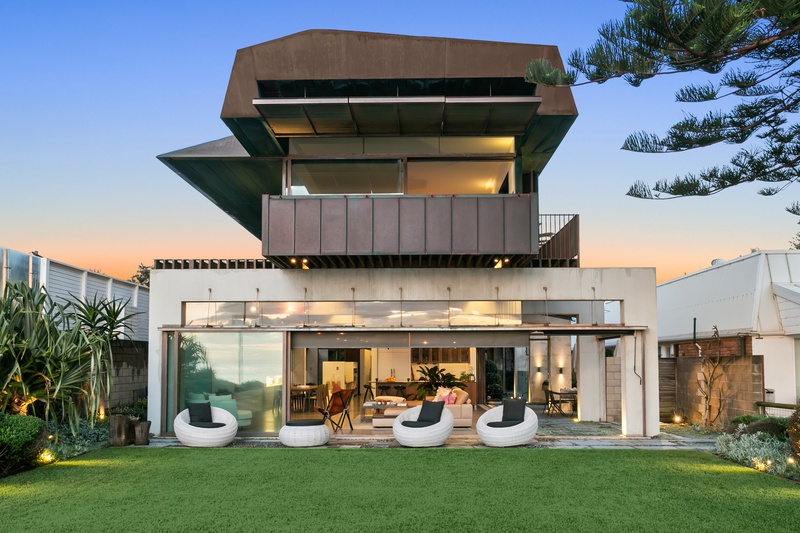Australian House Prices Retreat for First Time in Nearly Two Years
House prices rose 4.9% in 2024, but December registered a 0.1% drop
SYDNEY—Australian house prices recorded their first monthly decline in almost two years in December, but relief for the market appears close amid growing speculation that the Reserve Bank of Australia will start cutting interest rates from February.
House prices rose 4.9% in 2024, but December registered a 0.1% drop, the first since January 2023, according to property research group, CoreLogic.
The month saw deepening price falls in Melbourne and Sydney, the country’s two biggest property markets, while other state capitals also showed signs of weakening.
A national housing shortage and falling unemployment are lending some support to house prices, but elevated interest rates, poor affordability levels and low confidence are now taking a toll on the market.
“The decline in values is no surprise,” said CoreLogic’s research director, Tim Lawless. “This result represents the housing market catching up with the reality of market dynamics.”
“Growth in housing values has been consistently weakening through the second half of the year, as affordability constraints weighed on buyer demand and advertised supply levels trended higher,” he added.
There is widening evidence of weakness in the property market, with auction activity cooling from their highs, particularly in Sydney where successful sales at auctions have fallen to just above 50% of properties listed.
Still, the tide could turn again for house prices, after the RBA indicated in December it is growing more confident that inflation will soon return to target, paving the way for the start of interest rate cuts.
Economists are forecasting another year of modest gains for house prices, with the pace of increase largely dictated by the timing and extent of RBA rate cuts.
The RBA kept the official cash rate steady at 4.35% through 2024, putting it at odds with many of the world’s major central banks that have cut aggressively.
A shortfall in housing supply is also expected to remain significant for a long while yet, with the accumulated shortfall now estimated at around 200,000 homes, said Shane Oliver , chief economist at AMP.
 Copyright 2020, Dow Jones & Company, Inc. All Rights Reserved Worldwide. LEARN MORE
Copyright 2020, Dow Jones & Company, Inc. All Rights Reserved Worldwide. LEARN MORE
Pure Amazon has begun journeys deep into Peru’s Pacaya-Samiria National Reserve, combining contemporary design, Indigenous craftsmanship and intimate wildlife encounters in one of the richest ecosystems on Earth.
Australia’s housing market defies forecasts as prices surge past pandemic-era benchmarks.
A $20 million rebuild is set to reshape Rose Bay’s dress circle, with Tribe Studio proposing a sustainable, sculptural mansion to replace the existing trophy home and reclaim its coveted harbour views.
What happens in one of Sydney’s most affluent suburbs when a neighbour’s trees block your panoramic views of the Harbour? You build a new $20 million house.
That’s the reality in Rose Bay, where there are plans for a knockdown rebuild of the trophy home Indah on the dress circle Bayview Hill Road. That last sold for just over $27 million in 2015 when it was bought by barrister Georgina Black.
Two years ago, Black sought to have four recently planted palm trees on her neighbour’s property removed because they obstructed her view of the Sydney Opera House.
Council rejected the application, so Black took the matter to the Land and Environment Court. They also sided with her neighbour.
Now a new four-level home is planned for the prime 888 sqm block. The documents suggest it will be more in keeping with its location than the existing five-bedroom, glass-swathed mansion.
In its Design Statement submitted to Woollahra Council, Tribe Studio Architects described Rose Bay House as an “ambitious project.” They said they aim to set a high watermark for sustainable and Country-centred design.
Ironically, the report notes that, in a traditional sense, they are “being a good neighbour to the surrounding sites.”
“We are honouring shared views, we are creating landscape buffers, and we have liaised closely with neighbours where possible to secure their support for the proposal,” the report states.
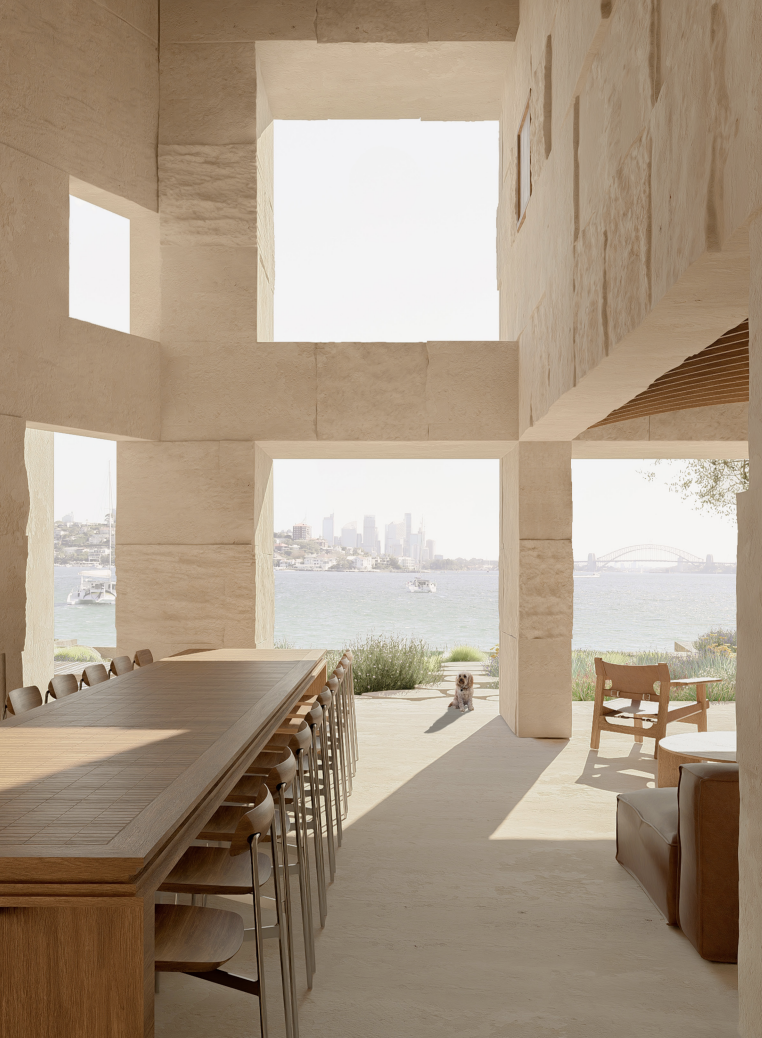
They also say they are driven by being a “good neighbour” to the Harbour.
“In this prominent location, the house is a shared foreshore for everyone using the Harbour. The design reinstates a sandstone, bushy foreshore and reduces the sense of highly reflective, large glass spans that dominate the existing dwelling.”
“We hope to inspire a new generation of luxury that is not reliant on imports and extraction, but rather is inventive, crafted and responsible.”
The elements of the home are categorised for longevity to manage maintenance, upgrades, and overall durability. Permanent elements are designed to last for hundreds of years.
The new home will span four levels. The entry level will feature an open-plan kitchen, living, and dining area opening to gun-barrel views of the Harbour.
Two levels will sit below ground. The lowest level includes a natural pool and a quarry-like, double-height outdoor dining area and undercroft pool zone. Tribe drew inspiration from the Ca’n Terra House by Ensamble Studio in Menorca, Spain, converted in 2020 from an abandoned limestone quarry.
The entire top level will be a dedicated master suite with a dressing room and ensuite. In total, six bedrooms are proposed, along with several home office spaces and lounge areas.
It would be realistic that given the purchase price of the home a decade ago, and a $20 million rebuild, the new trophy residence would become one of the priciest in Rose Bay.
The current Rose Bay record was set earlier this year when a harbourfront home on Tivoli Avenue, with three separate residences on the 1,138 sqm block, sold for a reported $82.5 million.
By improving sluggish performance or replacing a broken screen, you can make your old iPhone feel new agai
Ophora Tallawong has launched its final release of quality apartments priced under $700,000.
















